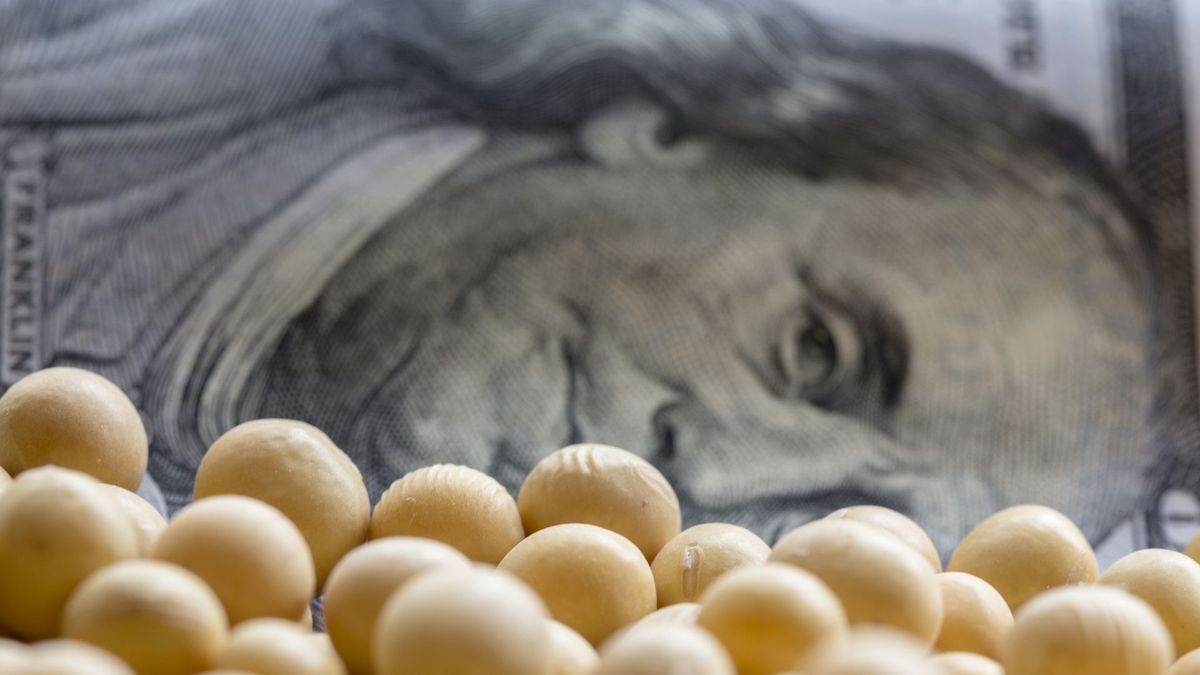(By Leandro Selen). The three editions ofl Export Increase Program (PIE), known as soybean dollar, meant an additional benefit of $590,000 million for agro-exporters, equivalent to more than five years of wages plus bonuses for registered workers who work in the soybean agro-industrial sector, according to an analysis prepared by the Current Work and Economy Viewpoint (MATE).
“The soybean sector was the great beneficiary and the exchange rate differential means a quite important income of pesos”indicated to Télam the MATE economist Natalia Pérez Barreda, author of the report.
He stressed that “this can be seen when compared with some component of the cost structure such as salaries in the sector.”
He stressed that “With the income of the three versions based on the salaries of the months in which they were implemented, more than five years of salaries are paid for the entire soybean agro-industrial sector”.
Pérez Barreda remarked that the work carried out “is a way of showing how important the benefits granted to the agro-export sector were.”
According to MATE’s analysis, in the first edition of the PIE, the soybean and derivatives export sector received $134 per dollar settled, that is, the $200 established by the Government as the differential exchange rate, minus 33% export duties. for soybeans and 31% for industrial by-products, including soybean oil. This meant an additional profit of $38.60 per dollar liquidated, an increase of 39%.
Soy+Dollar+Pesos-2.jpg
Soybean dollar: what were the results of the second edition
In the second edition, the soybean and derivatives export sector received approximately $158 per dollar settled. Taking the established differential of $230 minus export duties, which in this case were 31%, since practically no unprocessed soybeans were exported.
This represented an additional profit of $43 per dollar settled (+38%): $39 for the transitory exchange rate and $4.60 for the reduction in export duties.
Finally, during the validity of the agricultural dollar, the latest version of the PIE, andhe soybean and derivatives export sector received approximately $201 per dollar settled. This from a differential exchange rate of $300 minus export duties of 33%, which meant an average additional profit throughout the term of the program of $50 per dollar settled (+33%).
The impact on collection
For its part, the collection of the State also saw an increase in the three cases, in an additional $19, $18 and $25 per dollar settled respectively, implying increases of 38%, 25% and 33%.
The lower increase in the soybean dollar II was due to the reinstatement of the export duty differential, that is, to the lowering of rights to derivatives from 33% to 31%.
The soybean dollar II and agricultural dollar were calculated in order to maintain the additional benefit of the differential exchange rate aligned to inflation, that is, it went from having an additional average of $39 to $43 and $53, which means increases of 16 % and 22% respectively.
These increases were in line with inflationary indices, between September and December of 17%, and between December and April, of 21%.
This was intended to operate as an incentive for the liquidation to speed up during April, when there was the largest differential between the soybean dollar and the official dollar. However, most of the liquidation occurred in May, including close to a third of it in the last two days.
Regarding export affidavits, 84.5% corresponded to the soybean complex (57% by-products, 19% oil and 8% broad beans). 9% to sunflower (7.2% oils, 1.4% by-products and 0.4% seed), 5.2% to barley and 1.3% to sorghum.
The close to US$7,000 million liquidated by the sector during PIE I meant a total income for the sector of $927,000 million. Without the measure, $670,000 million would have been received. In other words, the sector had an additional profit of $257,000 million, equivalent to almost three years of wages plus bonuses for the entire oil plant. C.With the PIE II, the sector liquidated a little more than US$3,000 million, which implied a sum of $486,000 million. Without the measure, $359,000 million would have been received. TOan additional $126,000 million was obtained, equivalent to one year plus bonuses from the entire oil plant.
The balance of the soybean dollar III
And with PIE III, US$5,078 million were settled, of which US$4,266 million were settled by the soybean complex.
Said value is equivalent to about $860,000 million received net of export duties. Without the measure, $654,000 million would have been received. With which an additional profit of $203,000 million was obtained, equivalent to one year and three months of salaries plus Christmas bonus.
Together, the three measures meant an additional benefit of $590,000 million, equivalent to more than five years of salaries plus Christmas bonus for the entire sector, with salaries valued at prices for each month of implementation of the measure.
Source: Ambito




